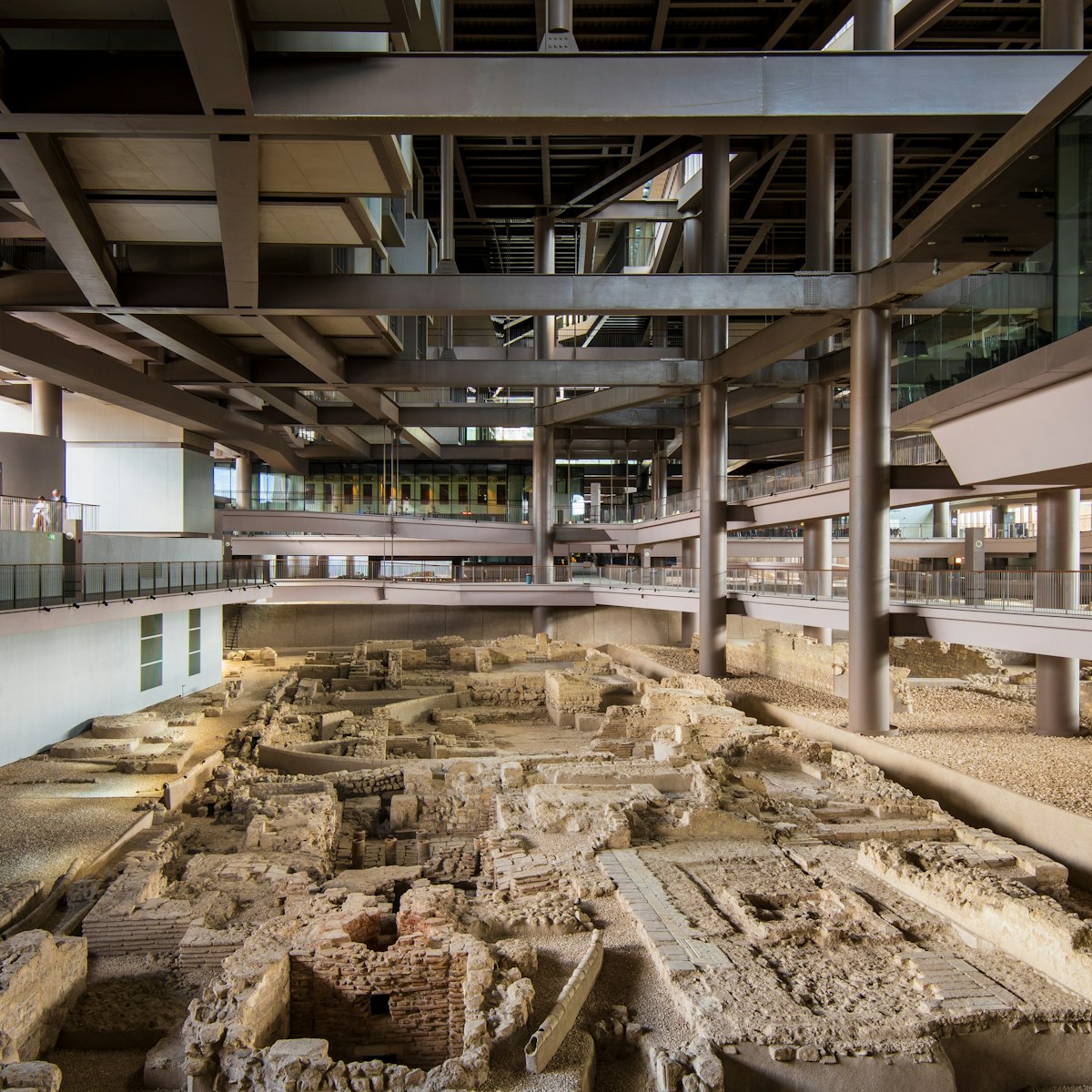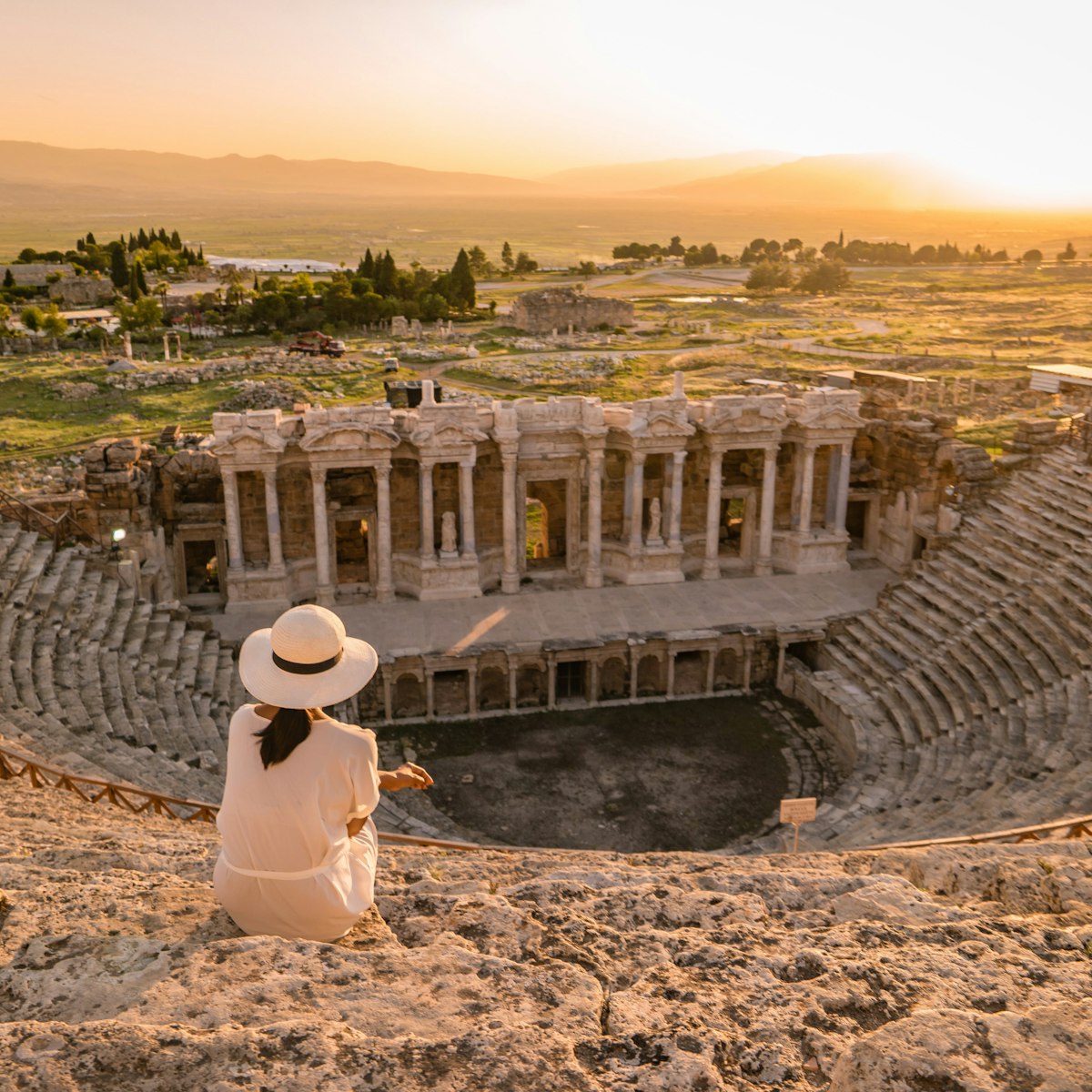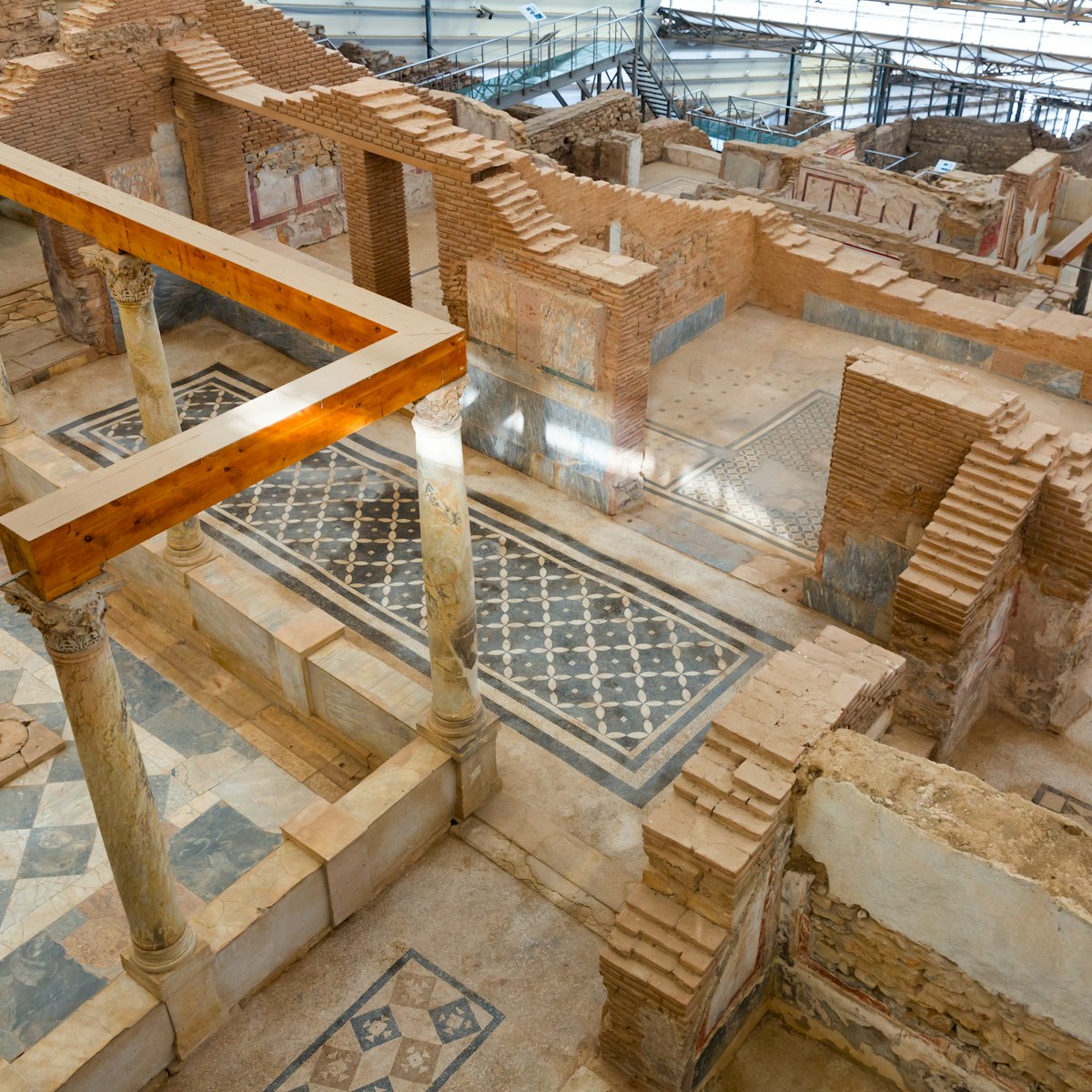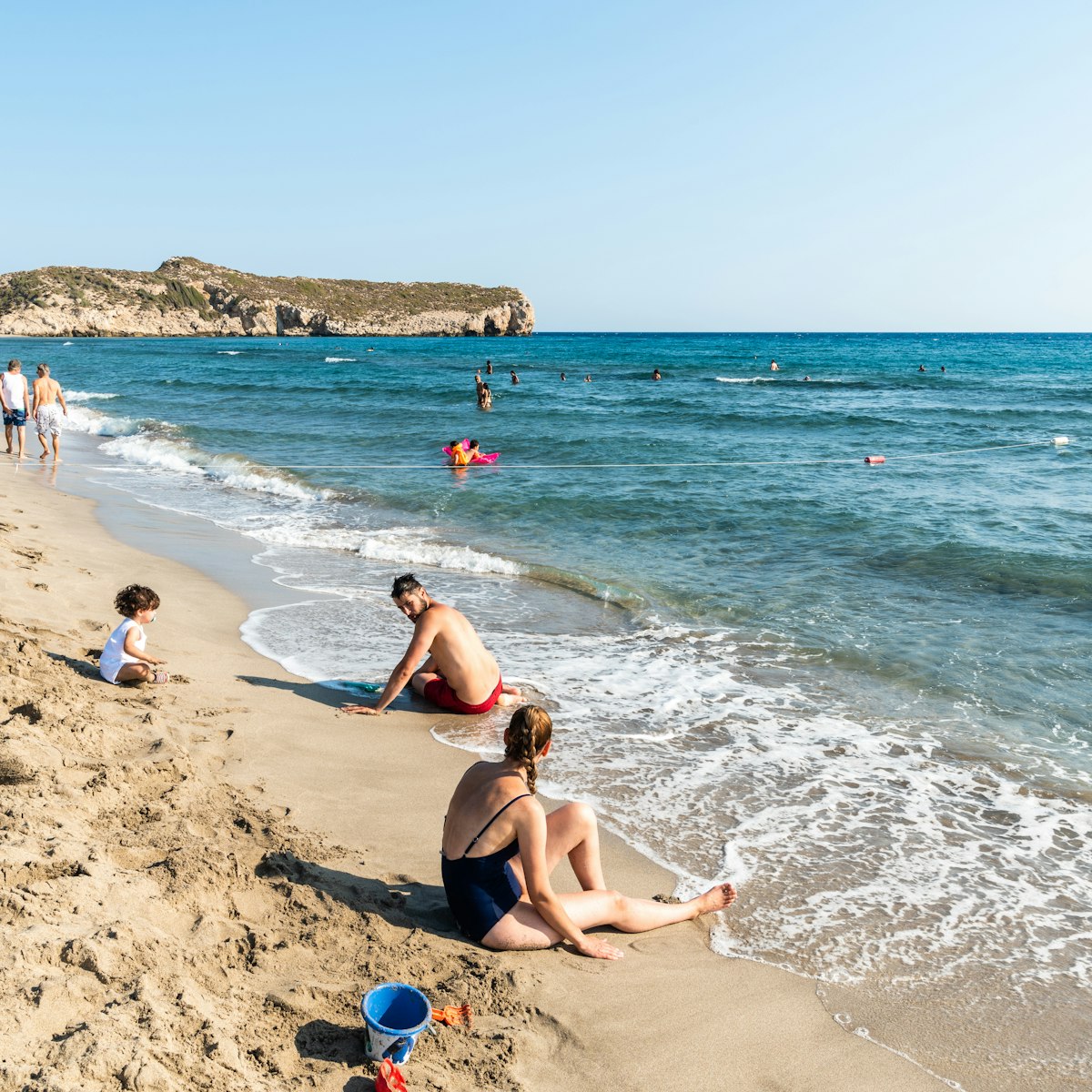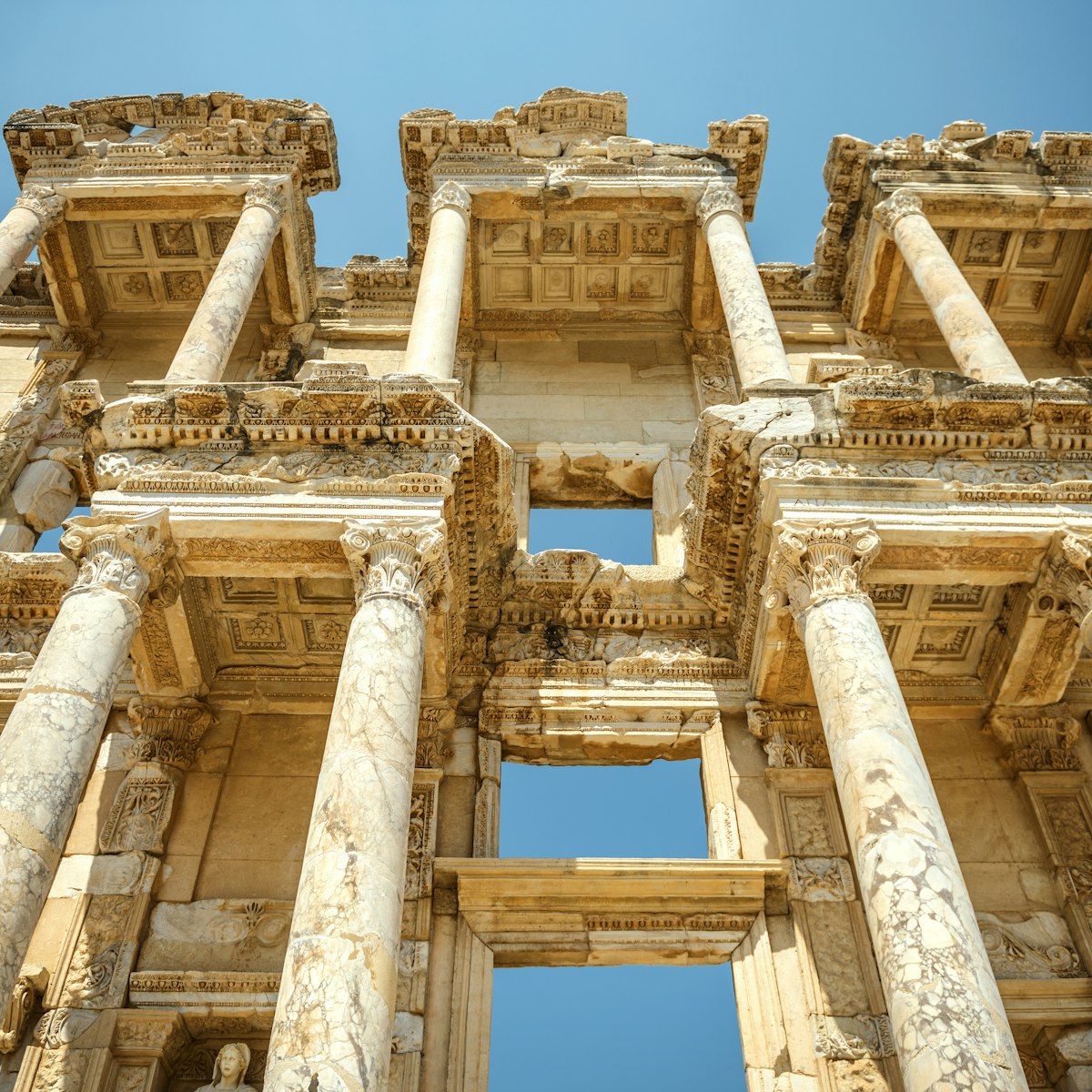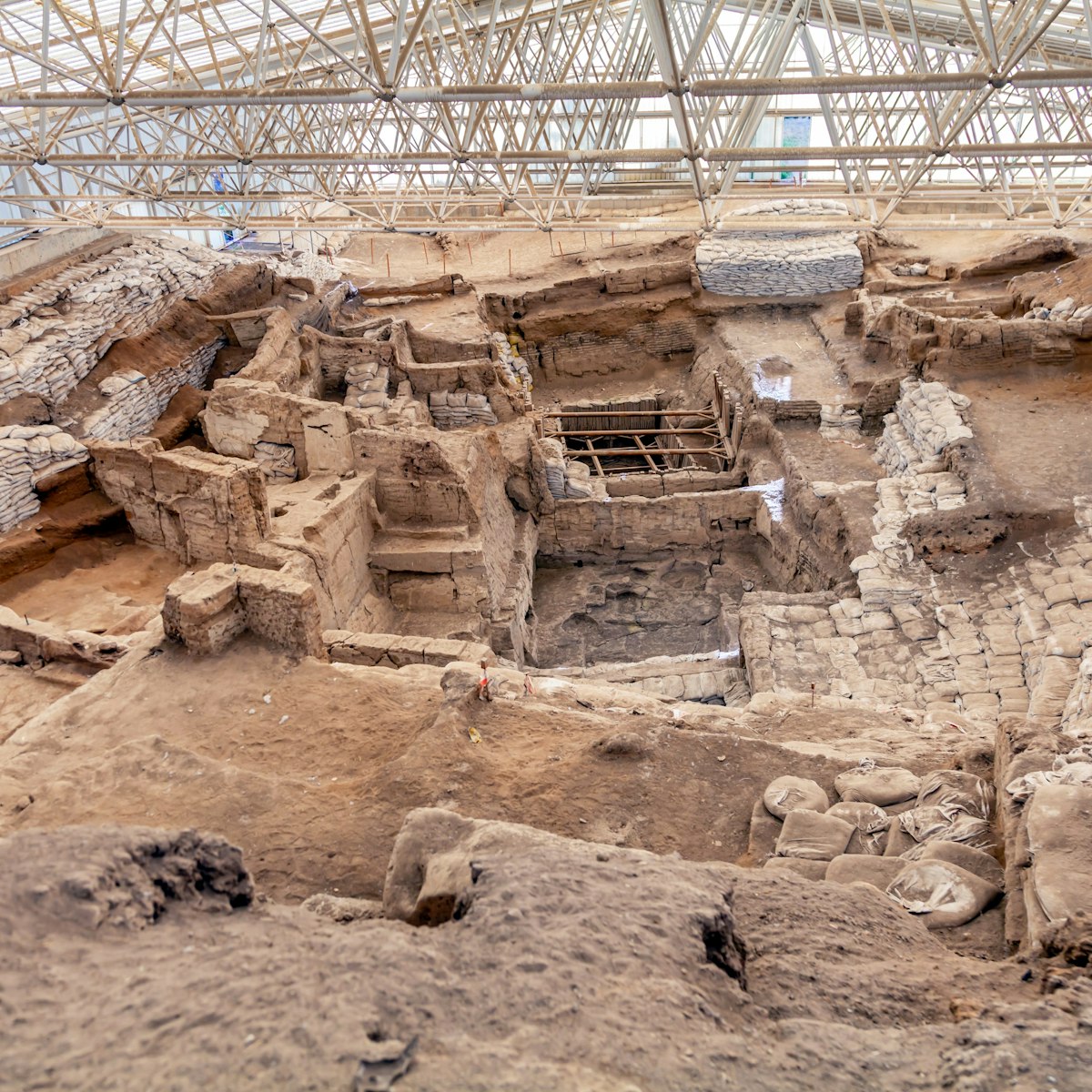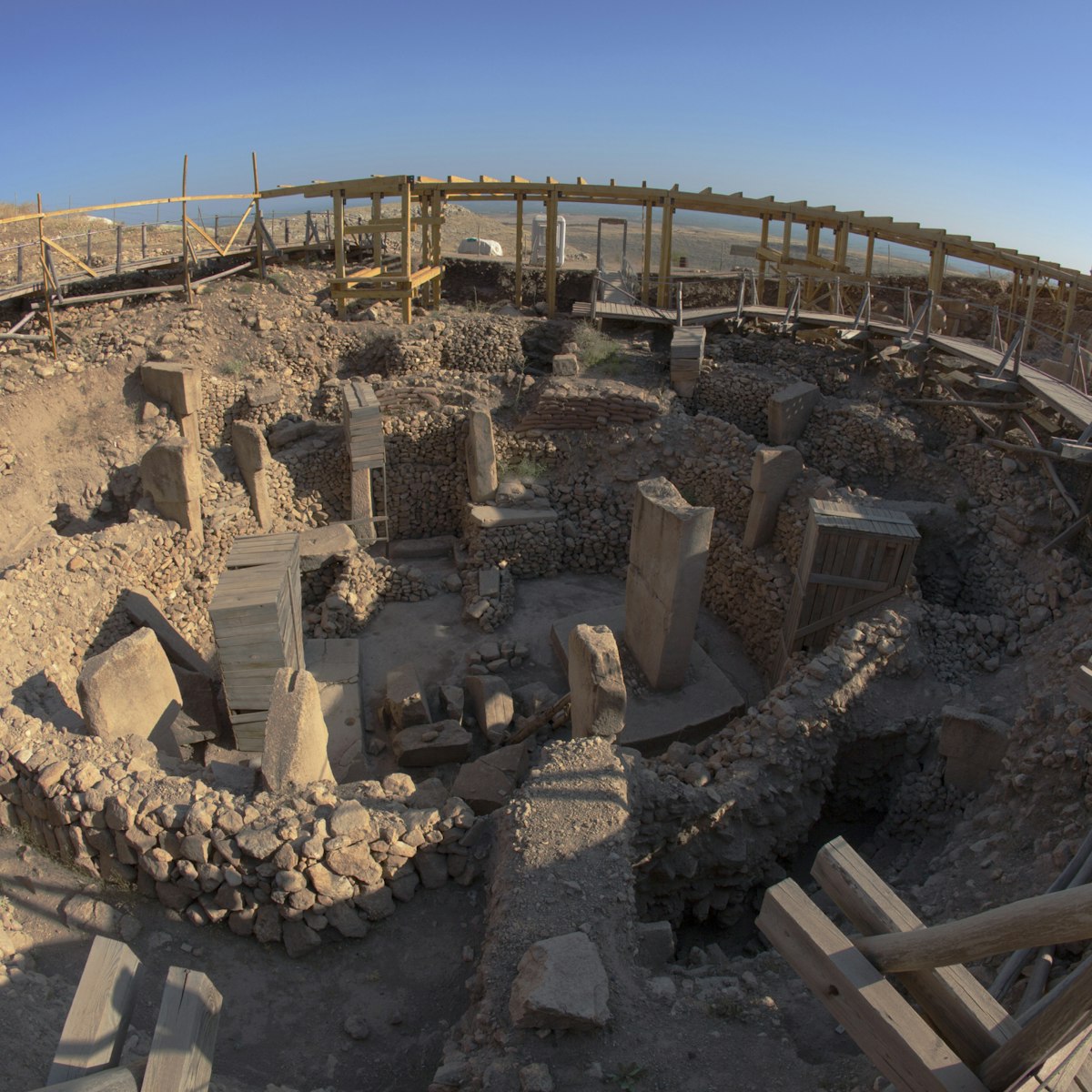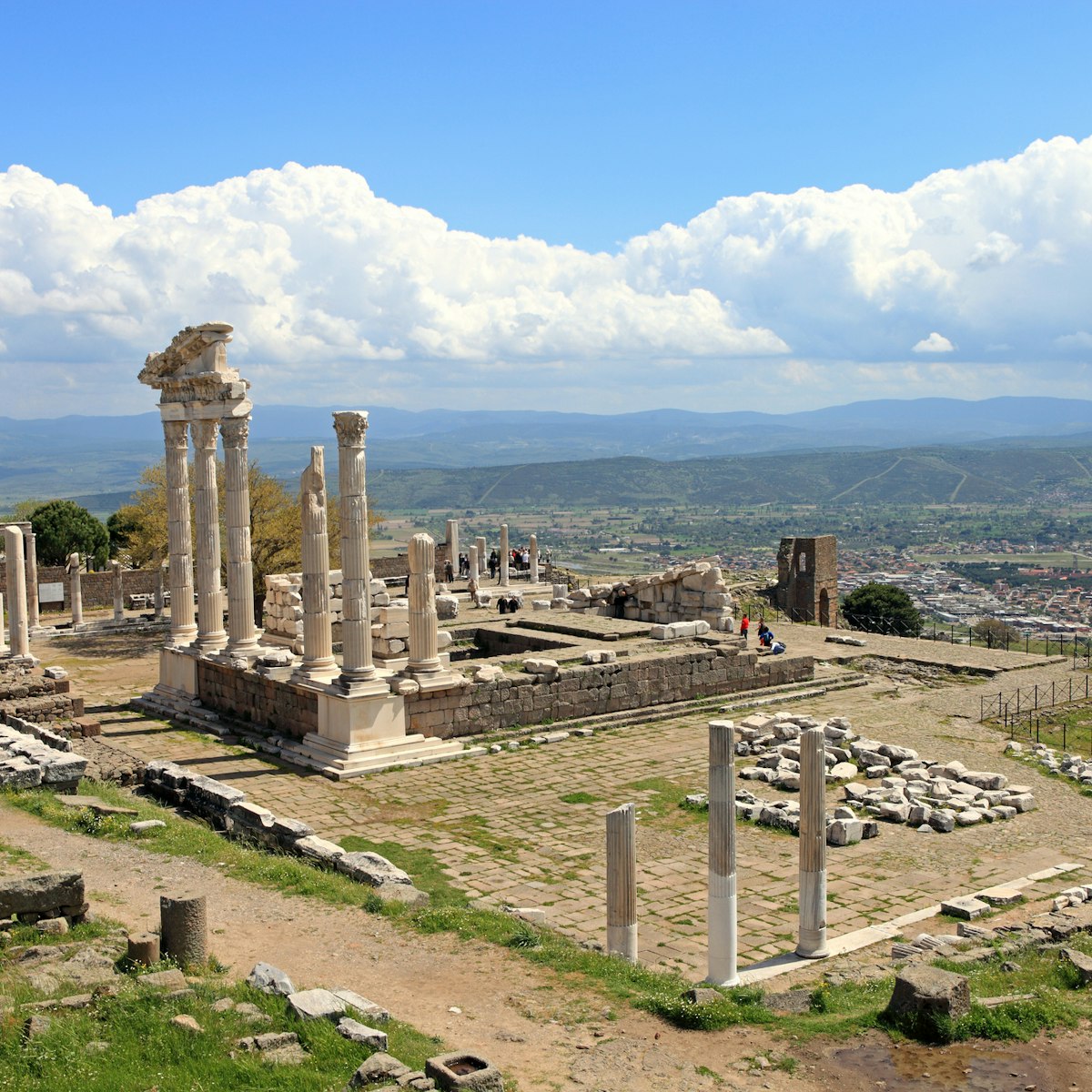
One of Turkey's most impressive archaeological sites, Bergama's acropolis is dramatically sited on a hill to the northeast of the town centre. There's plenty to see in this ancient settlement, with ruins large and small scattered over the upper and lower cities. Chief among these are the Temple of Trajan, the vertigo-inducing 10,000-seat Hellenistic theatre, the Altar of Zeus (sadly denuded of its magnificent frieze, which now resides in Berlin) and the whimsical mosaic floors in Building Z.
There are two ways to access the site. You can drive to the upper car park (parking ₺5) or instead follow the signposts along Akropol Caddesi to the lower station of the Bergama Acropolis Cable Car. There's a paid car park here, too (again ₺5). The cable-car ride takes five minutes.
From the Upper City, a line of rather faded blue dots marks a suggested route around the main structures – you might instead consider hiring the audio guide for ₺10. These structures include the library that helped put Pergamum on the map and the colossal marble-columned Temple of Trajan (or Trajaneum), built during the reigns of the emperors Trajan and Hadrian and used to worship them as well as Zeus. It's the only Roman structure surviving on the Acropolis, and its foundations were used as cisterns during the Middle Ages.
Immediately downhill from the temple, descend through the vaulted tunnel-like temple foundations to the impressive and unusual Hellenistic theatre. Its builders decided to take advantage of the spectacular view (and conserve precious space on top of the hill) by building the theatre into the hillside. In general, Hellenistic theatres are wider and rounder than this, but at Pergamum the hillside location made rounding impossible and so it was increased in height instead.
At the northern end of the theatre terrace is the ruined Temple of Dionysus, while to the south is the Altar of Zeus (also known as the Great Altar), which was originally covered with magnificent friezes depicting the battle between the Olympian gods and their subterranean foes. However, 19th-century German excavators were allowed to remove most of this famous building to Berlin, leaving only the base behind.
Piles of rubble on top of the acropolis are marked as five separate palaces, including that of Eumenes II, and you can also see fragments of the once-magnificent defensive walls as well as barracks and arsenal.
To escape the crowds and get a good view of the theatre and Temple of Trajan, walk downhill behind the Altar of Zeus, or turn left at the bottom of the theatre steps, and follow the sign to the antik yol (ancient street) past the Upper Agora and the bath-gymnasium. Within what was once a sprawling residential area of the Middle City is modern Building Z (2004), protecting part of a peristyle court and some fantastic floor mosaics. Look for the grotesque masks with wild animals, the child Dionysus with Silenus supping from a cup and the remnants of tinted stucco on the walls. You'll then pass more baths, gymnasia and the sumptuous Palace of Attalus I before reaching the Lower Agora.
 Publish for free
Publish for free

 zzdtravel
zzdtravel

